Film Footage of the Arrival of Josephine Baker in The Hague in 1928
Author: theeditor | Category: Film, Josephine Baker
Published: November 7, 2016
Lost Generation Era
Author: theeditor | Category: Film, Josephine Baker
Published: November 7, 2016
Author: theeditor | Category: Jazz Age Paris, Josephine Baker
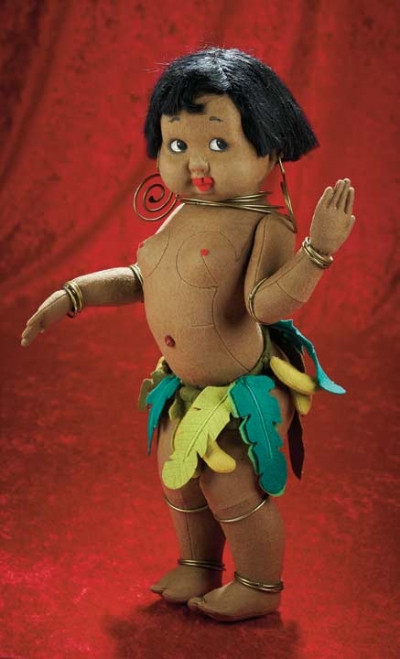
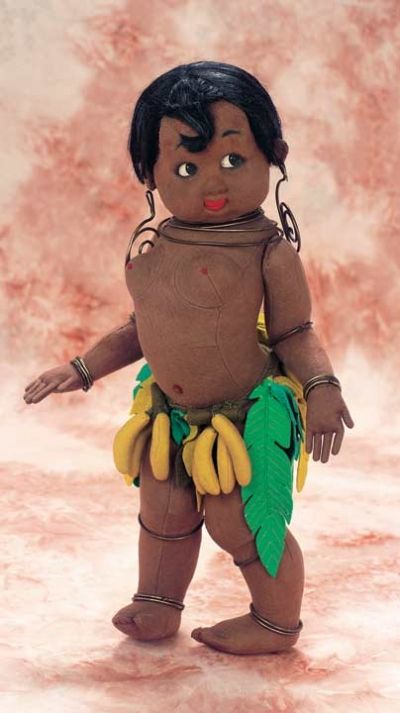
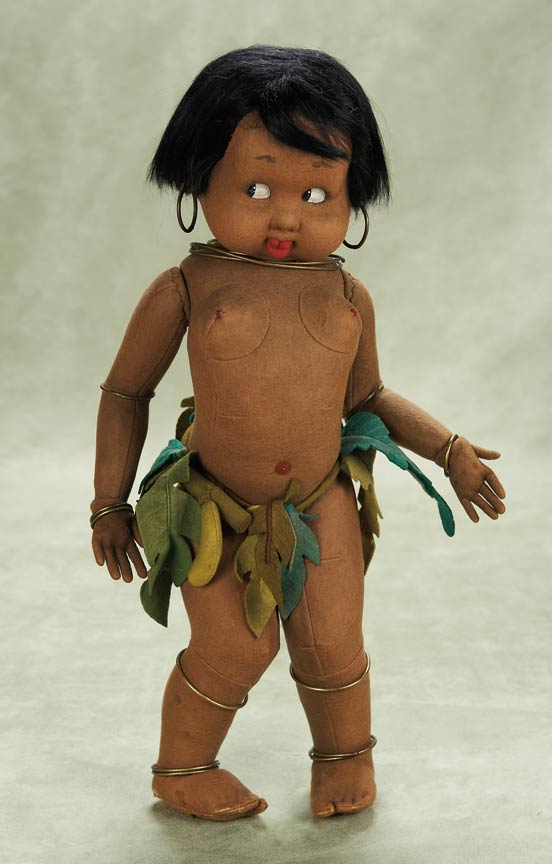
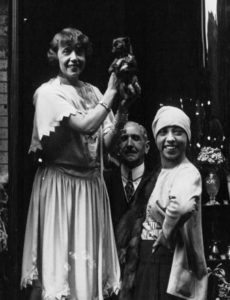
Mistinguett and Josephine Baker 1927
Source: https://www.theriaults.com/extremely-rare-italian-felt-character-dolljosephine-baker-lenci
Published: November 7, 2016
Author: theeditor | Category: Film, Jazz Age Paris, Josephine Baker
Shortened version of the live registration of ‘The Siren of the Tropics’ (‘La Sirène des Tropiques, FR 1927) featuring Josephine Baker. Performed December 23rd, 2012, EYE Filminstitute Netherlands, Amsterdam
Music written by Michiel Münninghoff (www.michielmunninghoff.com)
Published: November 7, 2016
Author: theeditor | Category: Jazz Age Paris, Josephine Baker
© Forget About It Film & TV, for BBC Wales. 2006. Narrated by Josette Simon. Directed by Suzanne Phillips.
Published: November 7, 2016
Author: theeditor | Category: 1920's Paris, Jazz Age Paris, Josephine Baker
Outrageous, shocking, sensational – Josephine Baker (Lynn Whitfield) was born poor, but achieved fame and fortune through her sizzlingly exotic and erotic performances. Starting life on the American Vaudeville circuit, success takes Josephine to Paris where her semi-nude dancing causes an international sensation. Through her marriages to an Italian pseudo-count (Ruben Blades) and orchestra leader (David Dukes), to her bond with army officer Sidney Williams (Louis Gosset, Jr.), Josephine’s life is a roller coaster ride of love and rejection from both her lovers and her country. But semi-nude or head to toe in sequins; in battle fatigues or rags – her beauty and ambition ensured that Josephine Baker will always be remembered as the first, and possibly most loved, truly international star.
Published: November 7, 2016
Author: theeditor | Category: 1920's Paris, Folies Bergère, Jazz Age Paris, Josephine Baker | Tags: Folies Bergere, Josephine Baker
The iconic Josephine Baker at the Folies_Bergère. This was in the period after Josephine has taken Paris by storm in the Revue Negre. Following a European tour she left the manager that had brought her to Paris for a staring role at the Folies_Bergère.
Recommended Reading:
This is a fascinating read and glimpse into the life and times Josephine Baker and her cohort during the Roaring twentes or “Années folles”.. Based on twenty years of research and thousands of interviews, this authoritative biography of performer Josephine Baker (1906-1975) provides a candid look at her tempestuous life
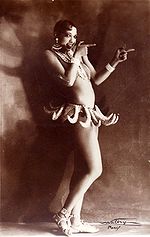
Josephine Baker in her banana costume
Ref:
Published: November 7, 2016
Author: theeditor | Category: 1920's Paris, Cafe de la Paix, Ernest Hemingway, Film | Tags: Cafe de la Paix, Ernest Hemingway
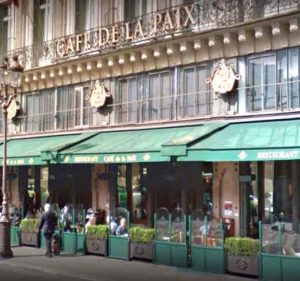 Cafe de La Paix was where Ernest Hemingway and Hadley went to celebrate their arrival in Paris in 1921. When they didn.t have enough cash to pay the bill Ernest had to rush back to their hotel for more money.
Cafe de La Paix was where Ernest Hemingway and Hadley went to celebrate their arrival in Paris in 1921. When they didn.t have enough cash to pay the bill Ernest had to rush back to their hotel for more money.
The following footage includes a vew of cafe in the 1920’s
Published: September 24, 2016
Author: theeditor | Category: 1920's Paris, Film, James Joyce, Jazz Age Paris, Montmartre, Pablo Piccasso | Tags: 1920s Paris, James Joyce, Montmartre, Piccasso
From Huntley Film Archives on Youtube is this archive film of 1920’s Paris. at the end of the clip is a glimpse of Piccasso in his studio that may be from a later era followed by a clip of James Joyce in conversation on a street in Paris. The description on Youtube does not mention Joyce :
“Paris. The Place de l’Etoile, Paris in the 1920’s with traffic moving on the road and pedestrians walking about. Paris street in the 1920’s with horse drawn carriages and some cars, banks of the Seine with building. Impressionistic shot of shadows of iron balustrades reflected on the Seine. Paris street scene in a flower market in the 1920s — many stalls laden with flowers and a middle aged female seller in the foreground as another woman in a cloche hat passes by in the rain. Paris, 1920’s, at night in the rain with cars on the wet road and illuminated buildings. Crowds in Paris night club in the 1920’s surrounding a black drummer, a very jazz age shot, — the young people present are jigging up and down in time to the music and some are clapping. A round table in a Paris pavement café — empty. A shot of a champagne bucket as a hand loosens the cork. A scene looking over the rooftops of Paris in the 1920s. Shot of a Paris basilica as seen down a narrow street — could be Montmartre. Shot of a Montmartre street/square (could be the Place Du Tertre), in the 1920’s with a corner café with street tables and a man on a bicycle cycling towards us. Empty frames in a shop window. A man handles a framed canvas in the street. A narrow Paris street in shade as a man walks down in. Three lace panels hanging on a line blow in the wind. A vegetable stall on a Paris street — an old street lamp on the street corner — the tradesman looks up at us. More Paris rooftops with some flags flying in the distance — we move along and see the feint shape of the Eiffel Tower in the background — we hear Hemingway’s description of life in Paris in the 1920’s and his unsalubrious lodgings. Shots of people in Paris cafes — one sips citron presse. Another oriental looking intellectual in big round glasses and a striped tie. A crowded pavement café with many fringed umbrellas above the tables which are full of people in cloche hats, trilbys and fur stoles — the epitome of café society of the 1920’s.
The sign of the Café Rotonde. Two women in cloche hats are seated at a round table on the terrasse with wine glasses in front of them — one is smoking a cigarette and the smoke billows around — the waiter pours more wine for them. An eastern street seller with a carpet over his shoulder is doing a transaction with two men seated in a street café — one wears a beret. Close up of a man blowing cigarette smoke as we are told how the “scum” of Greenwich village has colonised the area of Paris around the Café Rotonde, with the result that tourists, looking for Parisien atmosphere also frequent the area. We see a woman in furs and cloche hat with typical 1920’s flapper make-up. A shot of drinks on the café table. A smiling man with bohemian scarf around his neck. A hand on a leaf of paper. A row of people at a terrassed café. Then another shot of a spoon and a drink on a round café table, looking up we see a man in dangling a thin snake over his plate, he looks amused. We see the puzzled face of a man in jacket and tie. A row of four women, all in 1920’s cloche hats sit together at a café table and smile to camera — they are each tasting something in an experimental way, glasses and a water bottle on the table in front of them. A woman rests her face on her hand and stares at us in an amused but haughty way- she is wearing a silk cloche hat and reeks of Bohemian society — she smiles and lifts a wine glass to her lips then laughs obviously very amused and finally makes a comic face at us. From a travelling vehicle we see a Paris café on a street corner — a 1920 car is in front of the building and the café terrasse is full — men in straw boaters walk by and we can see waiters in white jackets; two soldiers walk along the pavement and we see the café’s name on its awning — Pouquet’s Bar. Hemingway grew to love Paris and got to know Monet, Braque and Picasso, We are inside Picasso’s studio as Pablo Picasso (recognised personality), is working on a sculpture — Picasso wears long shorts and is bare chested and tanned — he turns the sculpture around on its stand and we see it is the figure of a goat (this shot might be from a later decade as Picasso’s “She-Goat ” was not done until the 1950’s).”
Published: September 24, 2016
Author: theeditor | Category: Jazz Age Paris | Tags: August Herbin, Charles Gesmar, Jean Cocteau, Josephine Baker, Leonetto Cappiello, Miguel Covarrubias, Montmatrte, Paul Colin

In the 1920’s and 1930’s American artists, musicians, and writers flocked to Paris, France, the “City of Light,” Paris represented personal and artistic freedom, and they crossed the Atlantic in droves. All of Paris was in love Jazz and the new visitors bringing them their Jazz culture. The new visitors where welcomed with open arms for their unique talents especially their Jazz music.
As Paris rebounded from World War I in the 1920s artistic creativity and expression surges and central to the Jazz scene were the Americans, including many African Americans, who had served in the armed forces during the war and decided to stay or who traveled to Paris because of its positive racial and artistic climate.
Montmartre in Paris is famous for its artists and its jazz clubs including Le Grand Duc and Bricktop’s. Here many famous painters and jazz musicians lived and flourished.
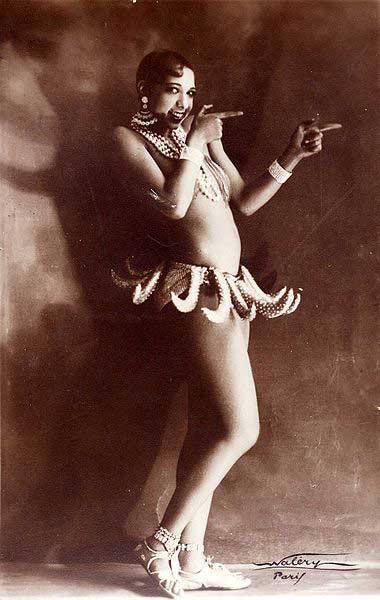
Jazz Age stars including Josephine Baker,James Reese
Europe, Ada “Bricktop” Smith, Sidney Bechet, and . Gypsy
guitarist Django Reinhardt, composer Darius Milhaud, and writers Hugues Pannaisié and
Charles Delaunay represent the Europeans who influenced and were influenced by the new
sounds, ideas, and spirit of the day.
Artists in Paris during the Jazz Age included Jean Cocteau, Paul Colin, Miguel
Covarrubias, August Herbin, Charles Gesmar, and Leonetto Cappiello.
The Paris district of Montmatrte, located in the 18th arrondissement was a famous location of the clubs and cabarets of the 1920’s
where Jazz was played and flourished, Pigale was a hotspot where Jazz fans collected nightly to hear the latest jazz proponents and rub shoulders with artists and bohemians of the era.Montmartre, was where the African-American expat community settled during the 1920’s in order to live a free life without racism. The Harlem Hellfighters were a band of soldier-musicians who had fought with the French army in World War I against the Germans. Here they were welcomed by Parisians into a culture of art, literature, dance, music, expecially Jazz music. African-Americans Brought the “Harlem Renaissance” movement and brought with them the musical culture of Harlem, New York.
In this era Paris emerges as one of the foremost capitals of Jazz and Montmartre was at it center, as a magnetic and glamorous place centered on Jazz music, art and culture. However, this “Golden Era” lasted only to Beginning of World War II, but to this day Paris has retained it’s reputation as one of the centers of Jazz and is known for its place in Jazz history.
[phpbay keywords=”josephine baker” num=”4″ siteid=”1″ sortorder=”BestMatch” templatename=”columns” columns=”2″ paging=”true”]
Published: September 24, 2014